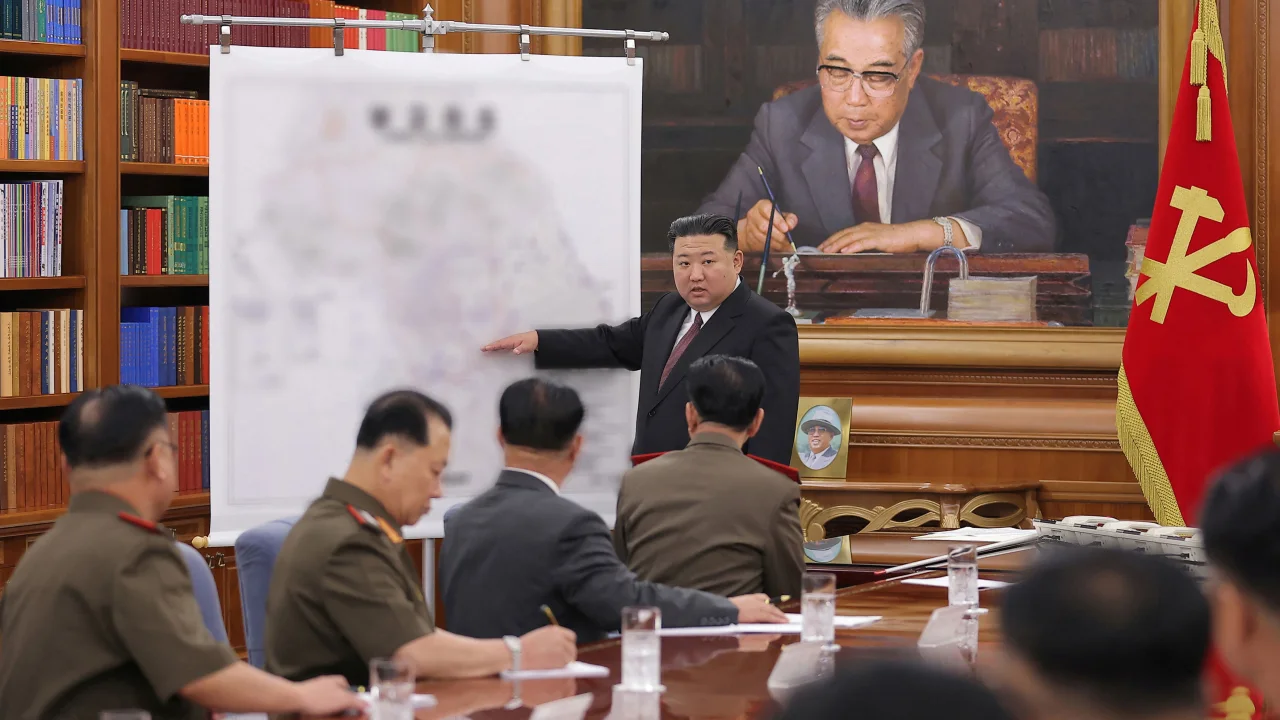Kim Jong Un, the leader of North Korea, has reportedly fired the country’s top general amid a reorganisation of the military hierarchy and wants his army to “gird for a war,” according to official media on Thursday.
According to the government-run Korean Central News Agency (KCNA), Vice Marshal Ri Yong Gil has been nominated as General Pak Su Il’s replacement.
Without getting into specifics, KCNA said that other “leading commanding officers” were let go, moved, or appointed during a Central Military Commission meeting on Wednesday.
North Korea frequently changes the military’s top brass. Some former military commanders eventually surface in new roles, while others vanish from public view.
Analysts noted that the new top general Ri’s career, who recently took over the No. 2 position in the North Korean military hierarchy on December 31, reflected this.
“Ri Yong Gil has been a stalwart member of North Korea’s military elite for many years, but his career had its ups and downs before he reached the top. After a reorganisation of personnel seven years ago, he was even said to have been put to death, according to Leif-Eric Easley, a professor of international studies at Ewha Womans University in Seoul.
Cheong Seong-chang, a senior analyst at the Sejong Institute private think tank outside of Seoul, stated that Kim’s military rearrangement may have been motivated by a variety of factors and was not necessarily punitive.
“It is inappropriate to regard CEOs’ dismissals as punishment,” Cheong stated. “Kim Jong Un has regularly promoted, demoted, and terminated executives according on their capacity to accomplish duties.
Easley suggested that the North Korean leader may be only trying to prevent anyone below him from gaining excessive authority.
“Kim Jong Un frequently rotates leadership posts below him to prevent the emergence in North Korea of anyone like [founder of the Wagner Group] Yevgeny Prigozhin, who challenged Russian President Vladimir Putin’s authority after gaining personal control of financial assets and loyalty among armed forces,” Easley said.
The reorganisation of the military hierarchy was only briefly mentioned in the KCNA report, which otherwise concentrated on what it called the “important issue of making the army more thoroughly gird for a war given the grave political and military situation prevailing in the Korean Peninsula.”
The report omitted mentioning South Korea or its main ally, the United States. The statement that the group “analysed the military moves of the chief culprits of deteriorated situation” on the peninsula appeared to make indirect reference to them.
According to the KCNA report, “making full war preparations” was the meeting’s main agenda item.
The Democratic People’s Republic of Korea (DPRK) army is required to have more positive, proactive, and overwhelming will as well as thorough and perfect military readiness for a war, according to the statement. “The current situation, in which the hostile forces are getting ever more undisguised in their reckless military confrontation with the DPRK,” it said.
This summer, North Korea has stepped up its military rhetoric, threatening to fire down US spy planes and retaliate against South Korea for allowing a US ballistic missile submarine with nuclear capability to dock there for the first time in 40 years.
Pyongyang has also demonstrated its improvements in ballistic missile technology, launching last month what it claimed to be an intercontinental ballistic missile (ICBM) called the Hwasong-18 with a flight time that shows it might reach the US mainland.
This weapon was one of many displayed at what North Korea referred to as its “Victory Day” parade last month, which was held to commemorate the armistice that put a stop to hostilities in the Korean War 70 years ago. Since no formal peace treaty has ever been signed, the two Koreas technically are still at war.
Kim signed the directives for war exercises using the nation’s most recent weaponry during the summit on Wednesday in Pyongyang.
Kim visited munitions and weapons companies late last week and delivered “important directions” regarding “capacity-building for the serial production of new ammunition,” according to a KCNA report.
South Korea declared this month that it would organise a national civil defence exercise on August 23 in the midst of the tension on the peninsula.
The majority of the 51 million people in the nation are anticipated to practise retreating to secure areas beneath the earth or bunkers during the 20-minute drill, which Seoul claims is in reaction to “provocations” from Pyongyang.

